Buildings are abandoned for many reasons, from financial troubles to natural disasters. What’s left behind are often hauntingly beautiful reminders of what once was. This list explores ten abandoned structures around the world, each with its own unique story and eerie charm.
Cape Romano Dome House
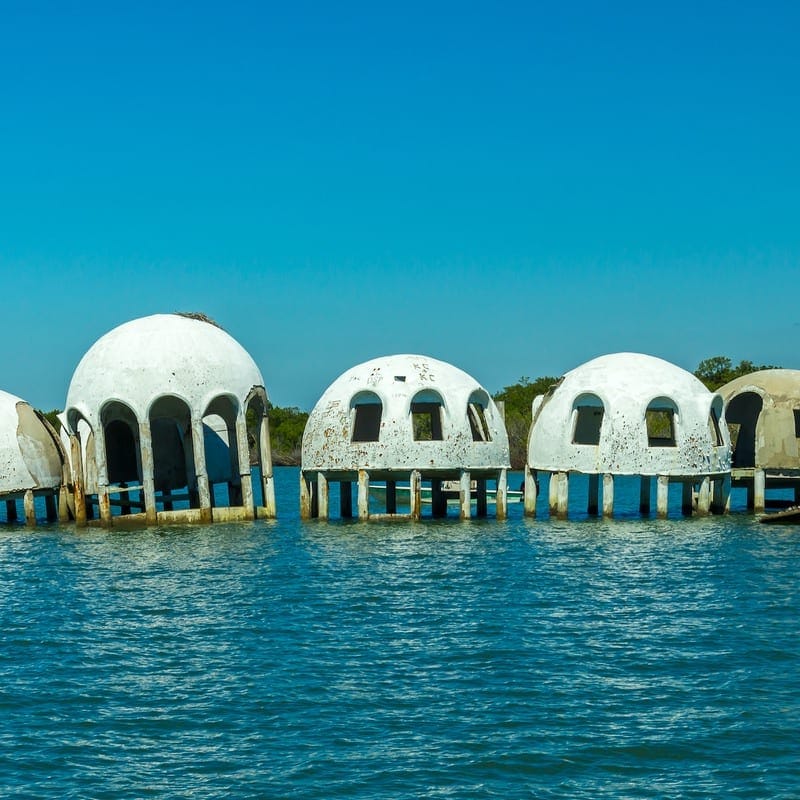
Built in 1980 by Bill Lee, the Cape Romano Dome House was intended to be an eco-friendly and self-sufficient home on the Gulf Coast of Florida. By 1982, Lee had completed his hurricane-resistant home, complete with solar panels and a rainwater collection system.
The futuristic-looking domes became a vacation home for the Lee family. Rumors started circulating about armed guards and even alien origins. Lee sold the house in 1984, repossessed it in 1987, and stayed until 1993. Despite surviving Hurricane Andrew, erosion forced Lee to evacuate permanently.
Today, only concrete pillars keep the structure above water, a testament to Lee’s ingenuity and the relentless power of nature.
Lapalice Castle
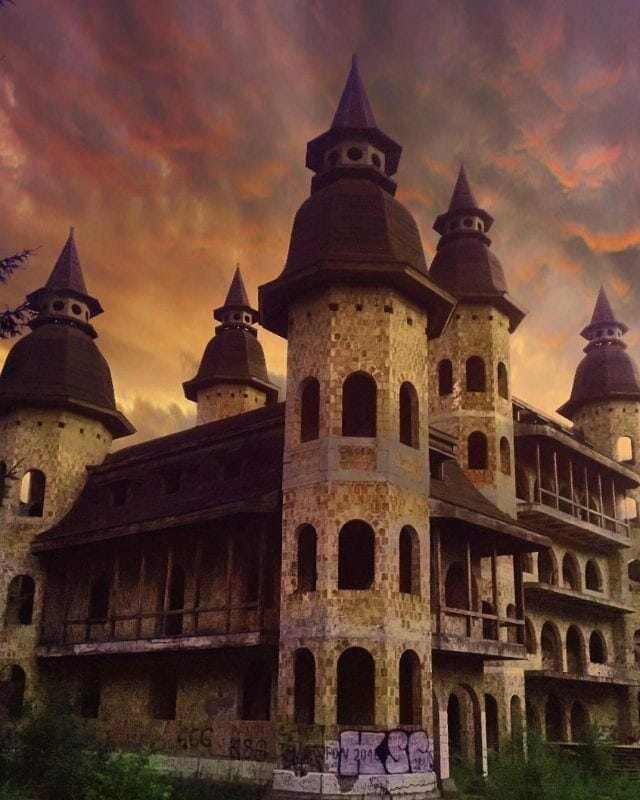
In 1979, artist Piotr Kazimierczak began constructing Lapalice Castle, envisioning it as a grand studio with twelve towers and a ballroom in a small Polish village. Unfortunately, Kazimierczak ran out of funds, leaving his ambitious project unfinished.
Lapalice Castle now stands abandoned, a shell of its former potential. Brave visitors occasionally explore its 52 rooms, undeterred by rumors of ghosts and the building’s fragile state. Kazimierczak continues to fight against demolition plans, hoping to preserve his dream.
Power Plant IM
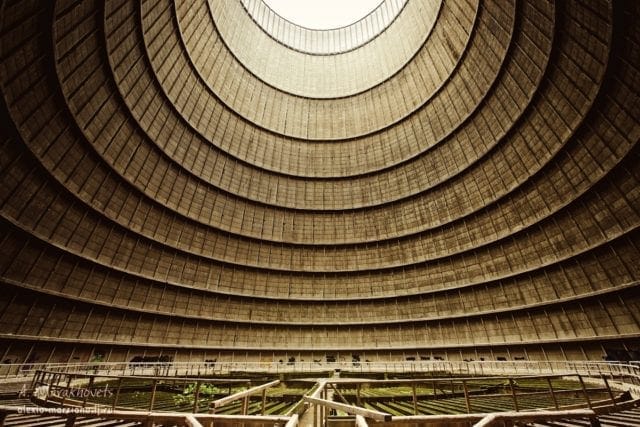
Resembling a scene from a post-apocalyptic film, Power Plant IM sits abandoned in Charleroi, Belgium. Built in the 1920s, it was once one of Belgium’s largest coal-burning power plants. By 1977, it was Charleroi’s main power source, capable of cooling 480,000 gallons of water per minute. It was later updated to also use gas power.
However, due to a report that the power plant was responsible for 10% of Belgium’s CO2 emissions, it was shut down in 2007. Despite demolition plans, the structure still stands in 2021, with greenery slowly reclaiming its interior.
Macassar Beach Pavilion
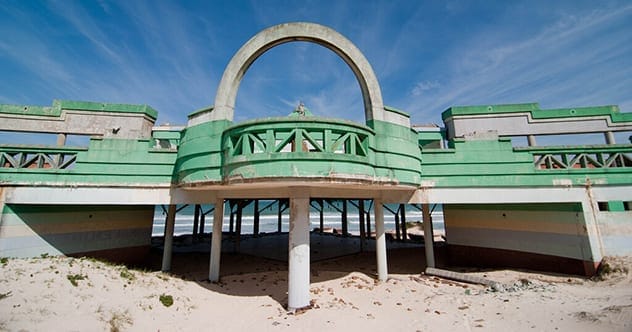
Along South Africa’s False Bay coastline, amid stunning scenery, lies the abandoned Macassar Beach Pavilion, a former water theme park. Built in 1991, it was once a popular beach resort. However, financial issues led to its abandonment, and the shifting sand dunes have gradually engulfed the structure.
The buildings are now filled with sand, the walls are covered in graffiti, and the atmosphere is heavy with despair. It stands as a stark contrast to the vibrant surroundings.
Atlantis Marine Park

During Perth’s economic boom, Alan Bond envisioned a resort to boost tourism in Western Australia. The result was Atlantis Marine Park, built in 1981. Known for its dolphin shows and pools, it was a popular family destination.
The stock market crash of 1987 brought the boom to an end, and Atlantis closed in 1990. The complex was abandoned, leaving only statues behind. A statue of King Neptune was later restored following a local campaign to clean up the park. The statue and surrounding areas are open to the public on weekends, but the marine park remains a shell of its former self during the week.
Stack Rock Fort
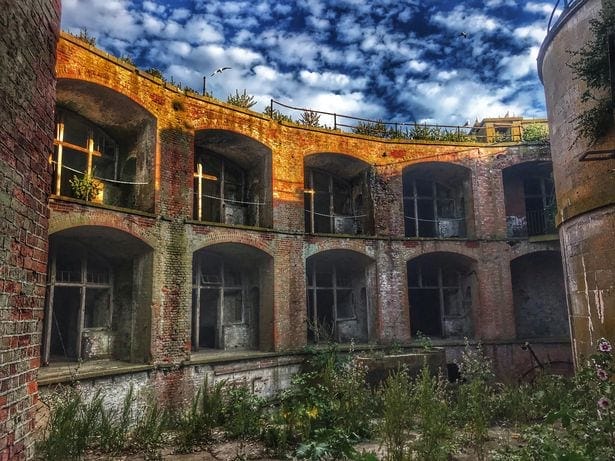
Between 1850 and 1852, Stack Rock Fort in Wales housed 150 soldiers tasked with defending the Royal Naval Dockyard. Disarmed in 1929, the fort now sits isolated off the West Wales coastline, shrouded in an eerie atmosphere.
Ghost hunters have reported hearing voices and strange sounds within the structure. It was sold in 2018 and again in 2020 to an anonymous buyer with plans to reopen it to the public.
Al Madam
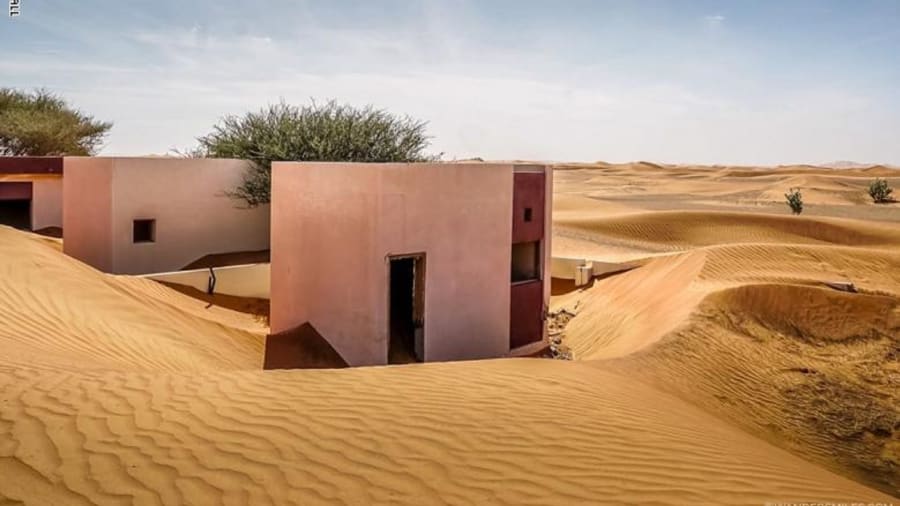
Legend says that a ‘jinn’ drove away the residents of Al Madam, a small village along the old Dubai-Hatta road. The village consists of two rows of well-constructed houses and a mosque, all remarkably intact.
However, the ever-shifting sands have invaded the houses, burying their rooms halfway to the ceiling. Some buildings are completely swallowed by the sand. Abandoned shops and building sites surround the sunken houses, all overlooked by stunning sand dunes.
Burj Al Babas

Burj Al Babas was intended to be a luxurious Disney-like castle valley. Instead, it became a failed development spanning over 250 thousand square meters in Turkey. 732 castles styled as luxury vacation homes were built for wealthy tourists.
The developers went bankrupt in 2018, causing investors to withdraw. The French chateaux-style castles now stand empty, many with unfinished rooms. Local residents disapprove of the project, deeming it incompatible with the area’s traditional Ottoman and Byzantine architecture.
Reschensee

In 1950, the construction of a dam that united three lakes led to the flooding of the small village of Graun. The village was completely submerged, except for the church bell tower that still rises from Reschensee, or Lake Reschen, in South Tyrol, Italy.
The church bells were removed before the flooding, but legend says that their sound can still be heard during snowy winters. When the lake freezes, the bell tower can be reached on foot.
Rummu Prison
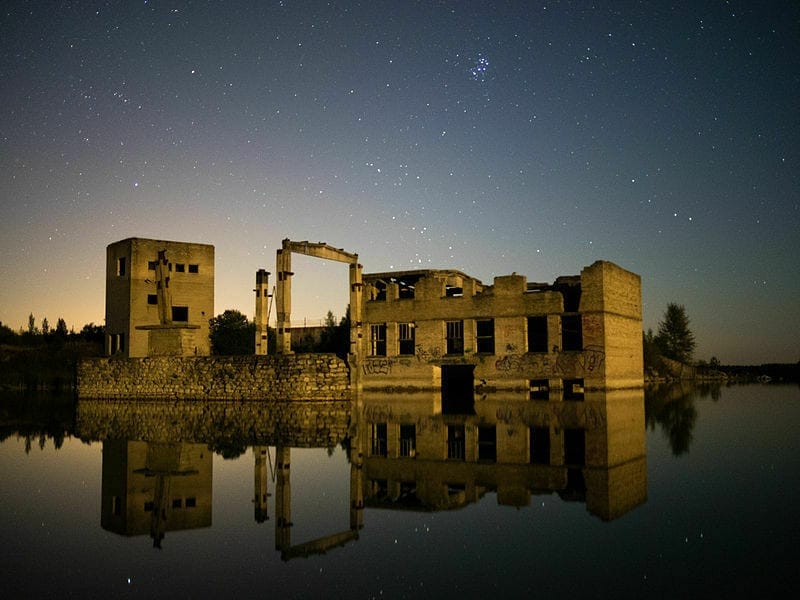
Rummu Prison in Estonia was built next to a limestone quarry where prisoners were forced to work. When Estonia regained independence in 1991, the Soviets left, abandoning both the prison and the quarry.
Underground water created a lake, submerging machinery and buildings. Today, parts of the old prison are visible on land, while others are submerged. It has become a popular diving spot for those curious to explore the underwater prison structure, despite occasional security intervention.
Which of these abandoned places fascinates you the most? Leave your comment below!










